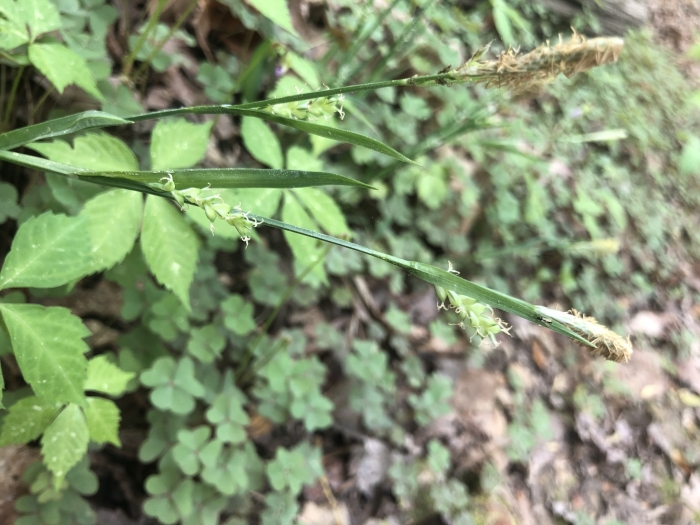Broad Loose-Flowered Sedge
(Carex laxiflora)
Broad Loose-Flowered Sedge (Carex laxiflora)
/
/

John Kees
Public Domain
Image By:
John Kees
Recorded By:
Copyright:
Public Domain
Copyright Notice:
Photo by: John Kees | License Type: Public Domain | License URL: http://creativecommons.org/publicdomain/zero/1.0/ | Rights Holder: John Kees | Publisher: iNaturalist | Date Created: 2021-04-10T18:03:28Z |


















Estimated Native Range
Summary
Carex laxiflora, commonly known as Broad Loose-Flowered Sedge, is a semi-deciduous perennial grass native to a variety of habitats including moist to dry woodlands, forest edges, and meadows in the Eastern United States and Southeast Canada. It typically grows to a height of 2-3 feet (0.6-0.9 meters) and a width of 0.5 feet (0.2 meters), featuring arching green foliage and inconspicuous greenish-brown flowers that bloom in late spring to early summer. The plant’s flowers are not particularly showy, but its foliage adds texture to garden compositions.
Broad Loose-Flowered Sedge is valued for its adaptability to a range of light conditions and its usefulness as a ground cover in shaded areas. It is often used in naturalized plantings, rain gardens, and as a filler in shaded perennial borders. This sedge is relatively low-maintenance, requiring minimal care once established. It prefers part shade to full shade and can tolerate a range of soil moisture levels, though it thrives in medium to moist soils with good drainage. While generally disease-free, it can occasionally suffer from rust or root rot in overly wet conditions. It is not known for aggressive roots or significant invasiveness issues, making it a safe choice for most gardens.CC BY-SA 4.0
Broad Loose-Flowered Sedge is valued for its adaptability to a range of light conditions and its usefulness as a ground cover in shaded areas. It is often used in naturalized plantings, rain gardens, and as a filler in shaded perennial borders. This sedge is relatively low-maintenance, requiring minimal care once established. It prefers part shade to full shade and can tolerate a range of soil moisture levels, though it thrives in medium to moist soils with good drainage. While generally disease-free, it can occasionally suffer from rust or root rot in overly wet conditions. It is not known for aggressive roots or significant invasiveness issues, making it a safe choice for most gardens.CC BY-SA 4.0
Plant Description
- Plant Type: Grass
- Height: 2-3 feet
- Width: 0.333-0.5 feet
- Growth Rate: Moderate
- Flower Color: N/A
- Flowering Season: Spring, Summer
- Leaf Retention: Semi-Deciduous
Growth Requirements
- Sun: Part Shade, Full Shade
- Water: Low, Medium
- Drainage: Medium, Slow
Common Uses
Bird Garden, Deer Resistant, Low Maintenance
Natural Habitat
Native to moist to dry woodlands, forest edges, and meadows
Other Names
Common Names: Loose Flower Sedge, Two-Edge Sedge, Carex Laxiflore
Scientific Names: , Carex laxiflora, Carex anceps, Carex anceps var. angustifolia,
GBIF Accepted Name: Carex laxiflora Lam.